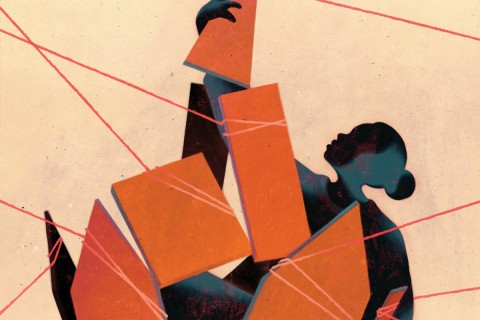Born in Haiti's rubble 12 days after the quake: Relief must start with the basics
Marie Sylsalve cradled her ten-day-old son McAnley and reflected on the past weeks that have taken an almost incomprehensible toll on her family and nation.
She last saw her husband Andre in the moments immediately following the January 12 earthquake that struck Haiti, hitting its capital especially hard. The family’s home was destroyed and Sylsalve saw a wall fall on Andre. She presumes he is dead. Twelve days later she gave birth in the ruins.
The birth of McAnley cheered her somewhat, but Sylsalve, who worked as a vendor and now lives at a displacement site in the Belair neighborhood of Port-au-Prince, is faced with supporting her infant son and three other children.
She has no immediate prospects for work but retains some hope for her infant son, saying that “everything that comes his way will be good.” But life right now is hard, she said tersely, continuing to cradle McAnley.
Sylsalve’s dispiriting experiences and lament are common in Haiti today.
The assistance provided by the church-backed ACT Alliance in Belair—including tents, water hygiene and baby kits—is only a first step toward recovery. There is also a need for psychosocial support to help those traumatized begin to resume normal life.
Sylsalve’s displacement site has a long association with the Brazilian organization Viva Rio, which is supported by reliefs groups working in Port-au-Prince. Programs for children include capoeira, an Afro-Brazilian martial art used as therapy for young people recovering from trauma. Drawing is another form of trauma therapy used at Viva Rio.
On a recent afternoon, several children involved in the program gathered and talked about their experiences. Seven-year-old Ricardo Jacques and ten-year-old Mario Pierre said the dancing and exercise of capoeira made them feel good.
The need for survivors to find some semblance of normality and peace undergirds the plans of groups like ACT in their plans for adult psychosocial programs.
Bjorg Roedland, a Norwegian nurse and a consultant with ACT/Norwegian Church Aid, acknowledged, however, that psychosocial work is not what survivors like Sylsalve need immediately.
“If the people don’t have food, how can they do other things?” Roedland said. “They have lost a lot of weight. They get angry if they don’t eat. You have to start with the basics.” But dealing with trauma must eventually be addressed, especially in areas where Port-au-Prince residents, particularly women and children, were vulnerable before the earthquake.
Fear of sex trafficking is one concern, as are rape and sexual abuse. Com pounding the need for protection of Haitians is the fear that children may be trafficked out of Haiti as orphans, as may be evidenced by the recent arrest of a group of Southern Baptists for trying to take Haitian children into the neighboring Dominican Republic.
A U.S. government report on trafficking notes that as many as 300,000 Haitians, ages six to 14, were trafficked in 2008. Many were forced to work as domestic servants, both in the U.S. and overseas. The report noted a “sharp increase” in the number of Haitian children trafficked for the sex trade.
Roedland said ACT Alliance staff in Haiti are working with local partners and community leaders, as well as with the Haitian government, to ensure that children most vulnerable to trafficking are identified and protected.
Another worry nags survivors. Ground tremors were felt daily even three weeks after the quake, reminding Haitians of the ever-present possibility of another earthquake.
Adults bear the most psychological scars; children seem more resilient, though that appears to depend on a number of factors. “If the mother and father are there, they can cope,” Roedland said.
Asked what he wanted to do when he grows up, Nacilien Josue, age ten, said: “Become a ship captain.” Why? “To bring in medical supplies,” he responded. –Chris Herlinger, Paul Jeffrey, Ecumenical News International




